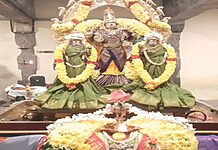Located in northern Cambodia, this Angkor Wat temple is one of the largest monuments in the world. Angkor Wat is a treasured Buddhist temple and the attraction of Angkor Archaeological Park. Located 6 kilometers north of Siem Reap, Angkor Wat is considered the gateway to the Angkor ruins.
The temple is revered as the national symbol and pride of Cambodia, and is even inscribed on their national flag. It can be said that there is no place on earth that can match the glory of Angkor Wat.
It is the largest religious monument ever built. It is believed to have been built as a temple and tomb of Suryavarman II in the first half of the 12th century under the management of the Khmer Empire. As with other Angkorean temples and walled cities such as Angkor Thom, the central theme of Khmer architecture revolves around the concept of the temple-mount.
By the time construction began on Angkor Wat in the early 12th century, it had been expanded into a central tower surrounded by four smaller towers. The central monument represents the mythological Mount Meru, the sacred mountain at the center of the universe that was the home of the Hindu god Vishnu.
The five gopurams represent the five peaks of Mount Meru. The enormity of Angkor Wat is difficult to express in words, but it can be somewhat explained by looking at the dimensions of the complex. A moat around this temple was created around the same period as the moat around the Tower of London. But it was nothing more than a garden ditch.
Forming a rectangle 190 meters wide and 1.5 km to 1.3 km in length, it is difficult to imagine that any attacking force could overwhelm the defenses. But the moat was more than a defensive rampart, in keeping with the temple’s Hindu origins it represented the oceans of the world.
On the inner edge of the moat is a rectangular wall measuring 1025 meters by 800 meters. There is a gate on each side of the wall, but unusually for predominantly Hindu-influenced Angkorean temples, the main entrance faces west.
The entrance is a 235 m wide decorated portico with three gates. However, the greatest treasure of the temple is the 2 km long fossils around the walls of its outer gallery and hundreds of figures and sculptures of devas and apsaras.
This intricately carved gallery tells the stories of Lord Vishnu and Suryavarman II’s victories on the battlefield. The entire campus covers an area of 81 hectares. History buffs say that this magnificent architectural marvel is a once-in-a-lifetime experience.









